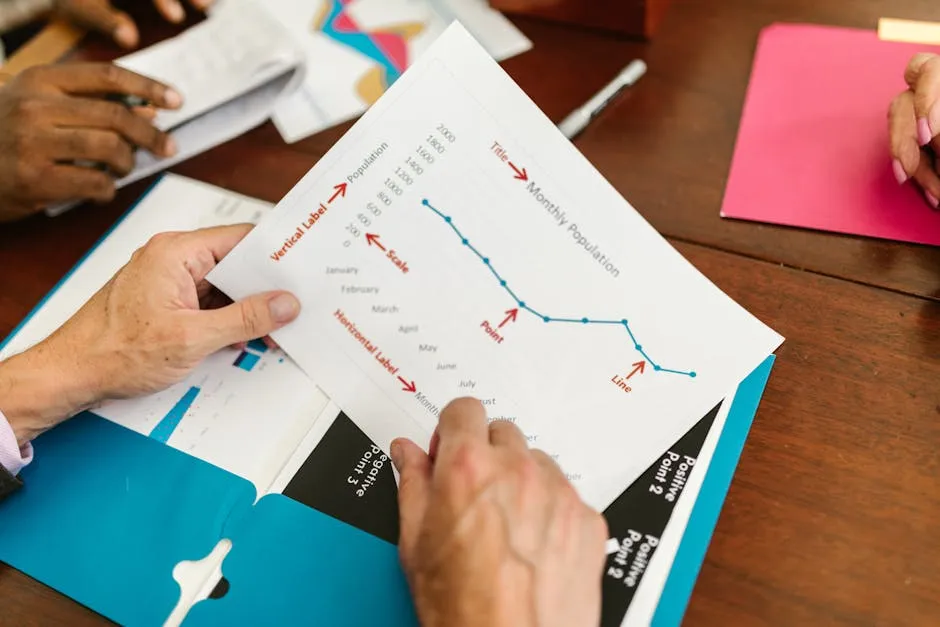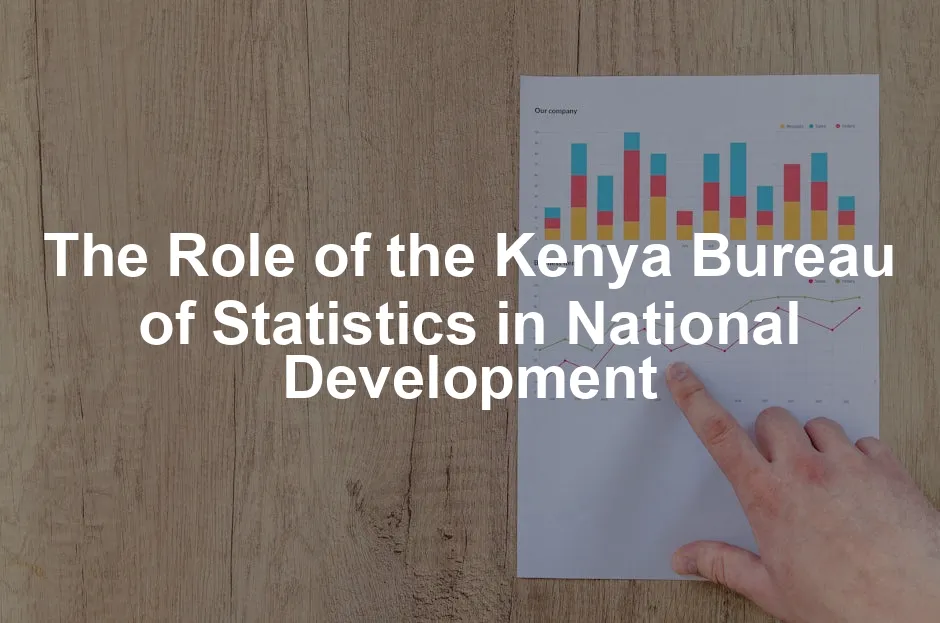Introduction
The Kenya National Bureau of Statistics (KNBS) stands as a beacon of data collection and analysis in Kenya. Established under the Statistics Act of 2006, it officially began operations in February 2007. The KNBS plays a crucial role in providing reliable statistics that guide both public and private sector decisions. Its headquarters, located in Nairobi, serves as the central hub for statistical activities across the nation.
Why is KNBS so significant? Well, imagine trying to navigate a city you’ve never visited without a map. That’s what decision-makers face without accurate data! KNBS crafts the map that helps the government, businesses, and organizations steer clear of pitfalls and drive toward prosperous outcomes. Quality statistics fuel policy formulation and help track progress. They’re like the GPS for Kenya’s development journey.
Data-driven decision-making is paramount for effective governance. Think about it: how can you plan a budget without knowing how much money you have? Or develop a healthcare strategy without understanding population health needs? KNBS ensures that policymakers have the insights required to make informed decisions that ultimately uplift the nation.

If you’re looking to dive deeper into the world of data science and its implications for business, consider picking up Data Science for Business: What You Need to Know about Data Mining and Data-Analytic Thinking. This book will equip you with the knowledge to harness data effectively in your decision-making processes, ensuring that you never have to navigate blindly again!
This article explores the depth of KNBS’s contributions to national development, focusing on its history, mission, vision, and key functions. Readers can expect to uncover compelling statistics, the impact of various programs, and the latest developments within this vital institution.
Importance of Data-Driven Decision Making
Statistical data is the backbone of informed policy decisions. It transforms abstract ideas into concrete strategies. For instance, during the COVID-19 pandemic, data on infection rates and demographics helped shape public health responses. Without such information, responses would have been like throwing darts in the dark.
Moreover, data influences resource allocation. It identifies areas of need, ensuring that funds are directed where they can make the most impact. The poverty rate, as reported by KNBS, was 38.6% in 2021. This statistic alone calls for urgent intervention and resources to alleviate poverty.

To delve deeper into the intersection of data science and business, check out The Power of Habit: Why We Do What We Do in Life and Business. This book explains how habits shape our decisions and how understanding this can lead to better outcomes in both personal and professional realms.
By utilizing data, Kenya can track its progress toward the Sustainable Development Goals (SDGs). KNBS provides the necessary metrics to measure advancements in education, health, and economic growth. As such, the bureau’s work is not just about numbers; it’s about livelihoods and improving quality of life.
Purpose of the Article
In this article, we will take a closer look at the Kenya National Bureau of Statistics. You will learn about its historical journey, mission, and vision that drive its operations. Additionally, we will highlight key statistics that showcase Kenya’s socio-economic landscape. Recent publications and initiatives will also be discussed, revealing how KNBS continues to adapt to changing needs and challenges.
Prepare to dive into the fascinating world of data and its critical role in shaping Kenya’s future!
Key Statistics and Reports
Current Demographics
Let’s take a closer look at the current demographics of Kenya. As of mid-2024, the population stands at a whopping 52,428,290. That’s a lot of people! Out of this, 24,014,700 are females and 23,548,100 are males. This gender distribution indicates a slight female majority, which can influence various social policies and initiatives.
But the numbers don’t just stop there. Population density in Kenya is 82 people per square kilometer, which is quite telling. It hints at urbanization trends, with many people flocking to cities in search of better opportunities. As cities swell, the demand for housing, healthcare, and education increases. This trend necessitates robust planning and resource allocation from the government.
Another interesting trend is the average household size, which is about 3.9 individuals. This statistic has implications for social services and educational resources. As families grow or shrink, the needs of the population evolve, making it crucial for policymakers to adapt accordingly.

For more insights into how data shapes our understanding of demographics, consider reading The Data Warehouse Toolkit: The Definitive Guide to Dimensional Modeling. This guide will help you understand how to structure your data for better analysis and reporting!
These demographics are not just numbers; they’re the backbone of planning for Kenya’s future. By understanding who lives in the country, the government can tailor services and programs to meet the population’s needs.
Economic Indicators
Now, let’s shift gears and discuss economic indicators. They serve as the pulse of the nation’s economy. One of the key metrics is the GDP growth rate, which recently clocked in at 5.0% for the first quarter of 2024. This growth is a positive sign, indicating a recovering economy, especially in light of recent global challenges.
But what about inflation? The Consumer Price Index (CPI) for September 2024 is reported at 3.6%. This number is critical for understanding the cost of living. When prices rise, it affects everything from grocery bills to transport costs. A low to moderate inflation rate is often seen as healthy for an economy.
However, there’s a caveat. The poverty rate in Kenya remains concerning at 38.6%, as per the 2021 headcount. This statistic highlights the disparities in wealth distribution and the urgent need for targeted interventions. The economic growth we see can sometimes be overshadowed by the realities faced by many Kenyans living under the poverty line.

To understand these economic trends better, you might want to explore Guns, Germs, and Steel: The Fates of Human Societies. This book provides a historical perspective on how societies develop and the underlying factors that influence economic conditions.
In essence, these economic indicators paint a vivid picture of Kenya’s economic health. They guide policymakers, businesses, and stakeholders in making informed decisions that can foster growth and development. As we continue to monitor these statistics, it’s crucial to remember that behind every number is a story waiting to be told. The aim is to ensure that economic growth translates into improved living standards for all Kenyans.
Latest Publications
The Kenya National Bureau of Statistics (KNBS) consistently delivers vital publications that influence policy and planning. Among the most significant are the Quarterly GDP reports and the Consumer Price Index (CPI), which offer insights into the economy’s health.
The Quarterly GDP reports track economic growth, showing a recent GDP growth rate of 5.0% in the first quarter of 2024. This figure is not just a number; it reflects the nation’s economic recovery and growth. Policymakers use this data to adjust fiscal policies and make informed decisions that can stimulate further economic activity. When the GDP is on the rise, it’s a signal for investment, both from the government and private sector.
On the other hand, the CPI is crucial for understanding inflation. The CPI for September 2024 stands at 3.6%. This metric directly impacts everyday Kenyans, affecting the cost of living and purchasing power. When inflation rates fluctuate, policymakers must respond swiftly. For instance, a high inflation rate can lead to increased interest rates, which might slow down economic growth. Thus, the CPI helps in adjusting monetary policies to mitigate adverse effects on the population.
Furthermore, these publications guide budget allocations. For instance, with a poverty rate of 38.6% reported for 2021, the government must prioritize social programs and initiatives aimed at poverty alleviation. By analyzing these publications, officials can identify areas needing immediate attention and allocate resources more effectively.

If you’re interested in how data analytics can be made accessible to everyone, you should check out Data Analytics Made Accessible: 2019 Edition. It’s a great resource for anyone looking to understand data without getting lost in the jargon!
Recent releases from KNBS, including the Trade Statistics Bulletin for the first quarter of 2024 and Leading Economic Indicators for July 2024, further enrich this dataset. These reports provide additional context for understanding trade balances and economic trends, essential for both local and international investors.
In summary, the latest publications from KNBS are not merely academic exercises; they are crucial tools that shape economic policy, guide planning, and ultimately improve the lives of Kenyans. As the country continues to navigate economic challenges, these reports will remain instrumental in steering it towards sustainable growth and development.
Other Notable Initiatives
The Kenya National Bureau of Statistics (KNBS) is not just about crunching numbers. They are also at the forefront of several impactful initiatives. One such project is the KENPHIA II survey, which aims to gather detailed data on HIV prevalence across the country. This survey is crucial for understanding the current state of HIV in Kenya and ensuring that health resources are allocated effectively. By focusing on areas with high HIV prevalence, the survey seeks to improve access to treatment and prevention services. The training for this initiative is already underway, showcasing the proactive approach KNBS takes in addressing public health challenges.
Digital transformation is another exciting area where KNBS is making strides. With the rise of technology, data collection and dissemination have become more efficient and transparent. The bureau is investing in digital tools to enhance how it gathers and shares data. Recently, a workshop was held to equip staff with skills in digitalization, ensuring services are more customer-focused and cost-effective. This transition not only streamlines operations but also promotes transparency, allowing for more accessible data for policymakers and the public alike.

If you’re interested in enhancing your understanding of data science, consider reading The Art of Data Science. This book provides a comprehensive overview of data science principles and practices that can elevate your analytical skills!
These initiatives demonstrate KNBS’s commitment to leveraging modern methods to address pressing societal issues while enhancing its operational efficiency. In a world increasingly driven by data, these efforts are essential for informed decision-making and effective governance.
International Collaboration
The Kenya National Bureau of Statistics (KNBS) plays a pivotal role in international data initiatives and partnerships. Collaborating with various UN agencies, KNBS enhances its capacity to gather and analyze vital statistics. This teamwork brings global standards to local practices, ensuring that data collected is not only relevant but also comparable internationally.
One of the noteworthy collaborations is with the United Nations Development Programme (UNDP). Together, they focus on strengthening statistical systems in Kenya. This partnership aims to improve the quality of data used in national planning and policy-making. When the UNDP and KNBS team up, it’s like a superhero alliance for statistics!
Moreover, KNBS partners with the United Nations Children’s Fund (UNICEF) to address child and maternal health issues. Through these joint efforts, they aim to collect data that highlights the challenges faced by vulnerable populations. This information is crucial for designing effective interventions.
Another key player is the World Bank. They provide technical assistance and funding to enhance KNBS’s capabilities. With support from the World Bank, KNBS has been able to implement innovative data collection methods. This includes integrating new technologies that make data gathering more efficient and accurate.

If you’re curious about how to leverage data science in executive roles, check out Data Science for Executives: Leveraging Machine Learning to Drive Business ROI. This book is a fantastic resource for understanding how data can directly impact your business strategies!
These international collaborations not only bolster KNBS’s data collection efforts but also ensure that Kenya’s statistics contribute to global discussions. By aligning with international standards, Kenya can share its data on platforms like the Sustainable Development Goals (SDGs). This visibility enhances Kenya’s credibility and fosters trust among stakeholders.
In summary, KNBS’s partnerships with international organizations are vital. They bring in expertise, resources, and best practices that elevate Kenya’s statistical landscape. Through these collaborations, KNBS not only meets its local needs but also contributes to the global statistical community, making waves beyond its borders.
Challenges and Opportunities
Challenges Faced by KNBS
The Kenya National Bureau of Statistics (KNBS) faces several hurdles that impact its operations. Funding is a significant issue. Budget constraints often limit the scope of data collection projects. Without adequate financial resources, it becomes challenging to conduct comprehensive surveys and maintain updated databases.
Data accuracy is another concern. Inaccurate data can stem from various factors, including inadequate training of field staff and lack of resources for quality control. This can lead to skewed statistics that misinform policy-making. The public perception of KNBS also plays a role. Many citizens view statistical data with skepticism, primarily if they feel that the data doesn’t reflect their reality.
Political and administrative challenges further complicate KNBS’s efforts. Data collection can be influenced by political agendas, leading to selective reporting. Bureaucratic red tape may slow down processes, making timely data availability a struggle. These challenges create an environment where data may not be fully trusted or utilized effectively.
Additionally, the rapid changes in demographics and economic conditions present a challenge for KNBS. Keeping pace with these changes requires constant adaptation and innovation. The need for timely and relevant data is more pressing than ever, demanding agile responses from KNBS.

Opportunities for Improvement
Despite its challenges, KNBS has numerous opportunities for enhancement. Reforms centered on funding could significantly impact the bureau’s capabilities. Advocating for increased government and donor funding can lead to more robust data collection initiatives. More resources could facilitate comprehensive surveys and the implementation of innovative technologies.
Innovation is also pivotal. Embracing digital tools can streamline data collection and analysis. KNBS has already made strides in this direction. Expanding these efforts could further enhance operational efficiency. For instance, adopting mobile technology for surveys can improve data accuracy and reduce collection time.
Public engagement is essential. By increasing transparency and involving citizens in statistical processes, KNBS can build trust. Hosting workshops and forums to educate the public about the importance of statistics can encourage greater participation in surveys. This not only improves data quality but also fosters a culture of data appreciation.
Finally, collaboration with academic institutions can drive research and development in statistical practices. Partnerships can lead to innovative methodologies that enhance data quality and relevance. By engaging with universities, KNBS can tap into fresh ideas and perspectives.
In conclusion, while KNBS faces several challenges, there are ample opportunities for growth and improvement. By focusing on funding, innovation, public engagement, and collaboration, KNBS can strengthen its capacity. This, in turn, will enhance the quality and reliability of the statistics that support Kenya’s development.
Conclusion
The Kenya National Bureau of Statistics (KNBS) is a cornerstone of national development. Its role in collecting and disseminating data is crucial for effective policy-making. Throughout this article, we explored KNBS’s history, mission, functions, and its impact on various sectors.
International collaborations have positioned KNBS as a significant player in the global statistical community. Through partnerships, the bureau has access to resources and expertise that enhance its operations. However, challenges like funding and public perception must be addressed to maximize its potential.
Opportunities for improvement exist through reforms, technological innovations, and increased public engagement. By embracing these opportunities, KNBS can further solidify its role in supporting sustainable development in Kenya.
In closing, it is vital for stakeholders—government, private sector, and civil society—to support KNBS initiatives. Data-driven decision-making is not just a bureaucratic exercise; it’s about improving lives. By investing in KNBS, we invest in a brighter future for all Kenyans. Let’s rally behind data as a tool for progress!
FAQs
What is the Kenya National Bureau of Statistics (KNBS)?
The Kenya National Bureau of Statistics (KNBS) is the principal agency responsible for collecting, analyzing, and disseminating statistical data in Kenya. Established by the Statistics Act of 2006, KNBS operates under the Ministry of Planning. Its mission focuses on providing quality statistics that support informed decision-making in various sectors, including government, business, and civil society.
How often is the Kenya Population and Housing Census conducted?
The Kenya Population and Housing Census is conducted every ten years. The most recent census took place in 2019, documenting the population and housing conditions across the country. This comprehensive survey is crucial for understanding demographic trends and planning for national development.
What types of data does KNBS collect?
KNBS collects a wide range of data, including demographic information, economic indicators, and social statistics. This encompasses population statistics, employment data, GDP growth, inflation rates, and more. By analyzing this data, KNBS provides valuable insights that inform policy and planning.
How can individuals access KNBS data?
Individuals can access KNBS data through its official website. The bureau regularly publishes statistical reports, bulletins, and datasets that are publicly available. By visiting [knbs.or.ke](https://www.knbs.or.ke/), users can find a wealth of information on various aspects of Kenya’s socio-economic landscape.
What is the importance of statistical data in Kenya?
Statistical data is crucial for effective governance and development in Kenya. It informs policy decisions, resource allocation, and program implementation. By providing accurate and timely data, KNBS helps stakeholders understand trends and challenges, ultimately supporting initiatives aimed at improving the quality of life for all Kenyans.
Please let us know what you think about our content by leaving a comment down below!
Thank you for reading till here 🙂
To learn more about the role and contributions of the bureau, visit the Kenya National Bureau of Statistics.
For a comprehensive overview of the KNBS, check out this detailed guide on KNBS.
All images from Pexels




